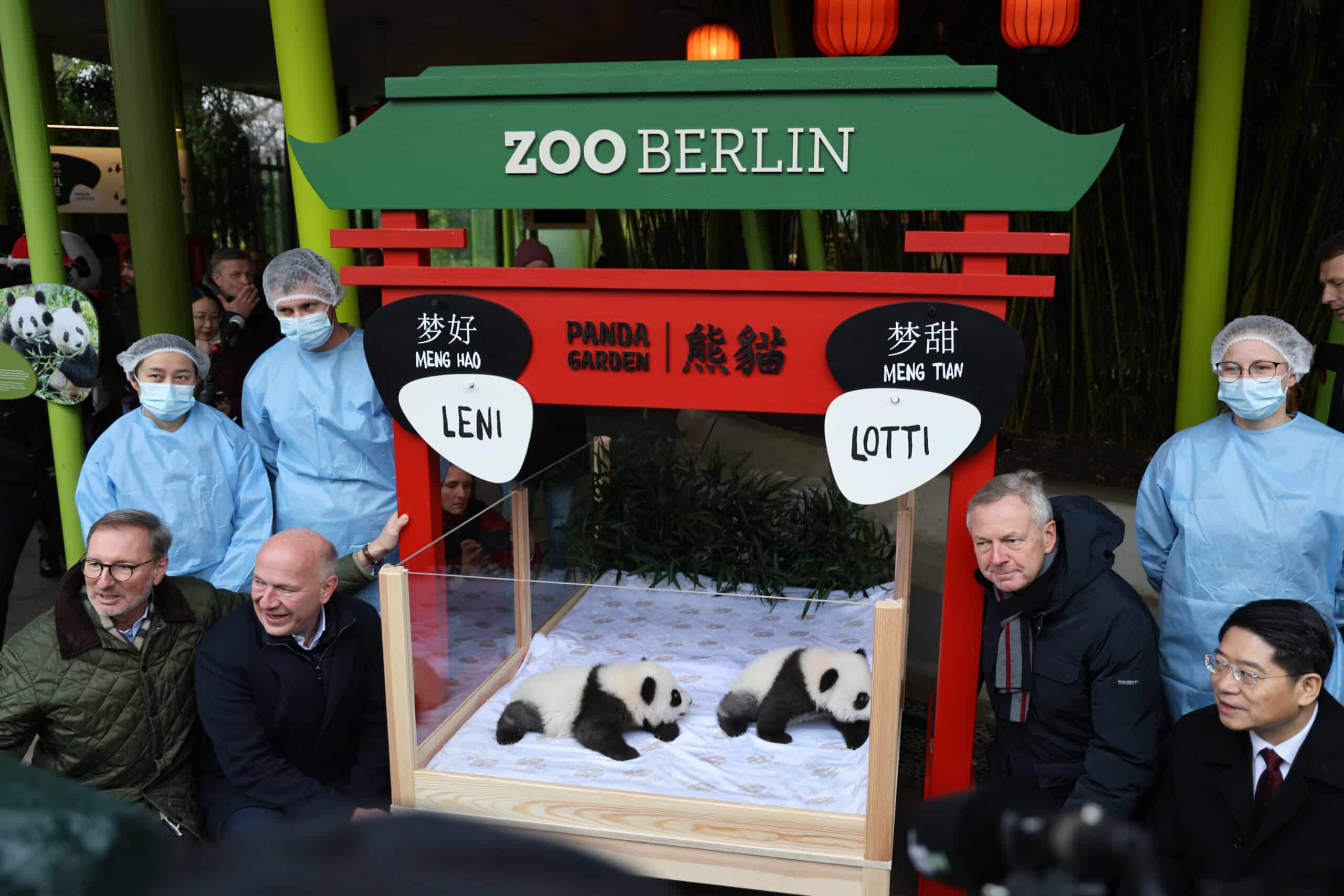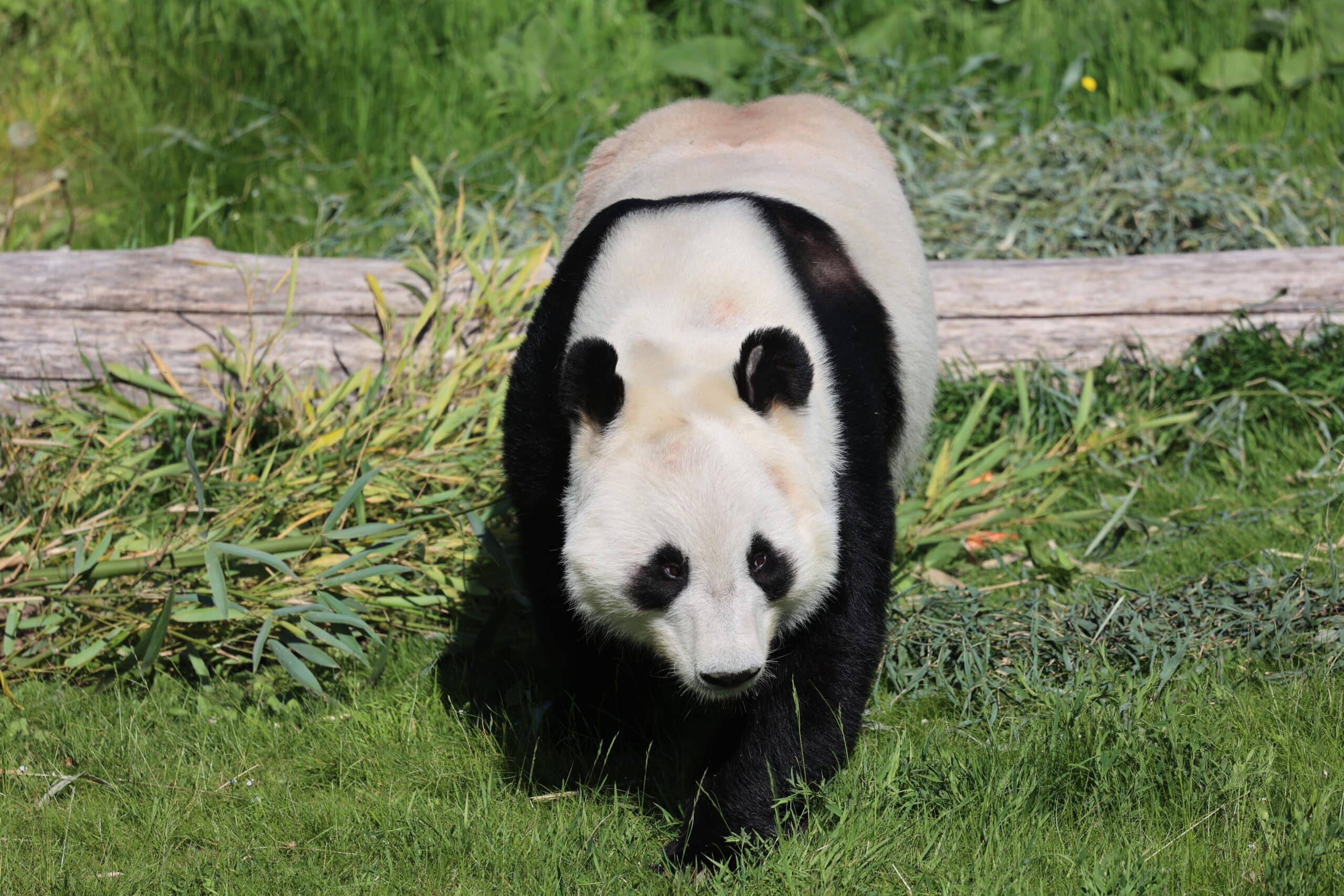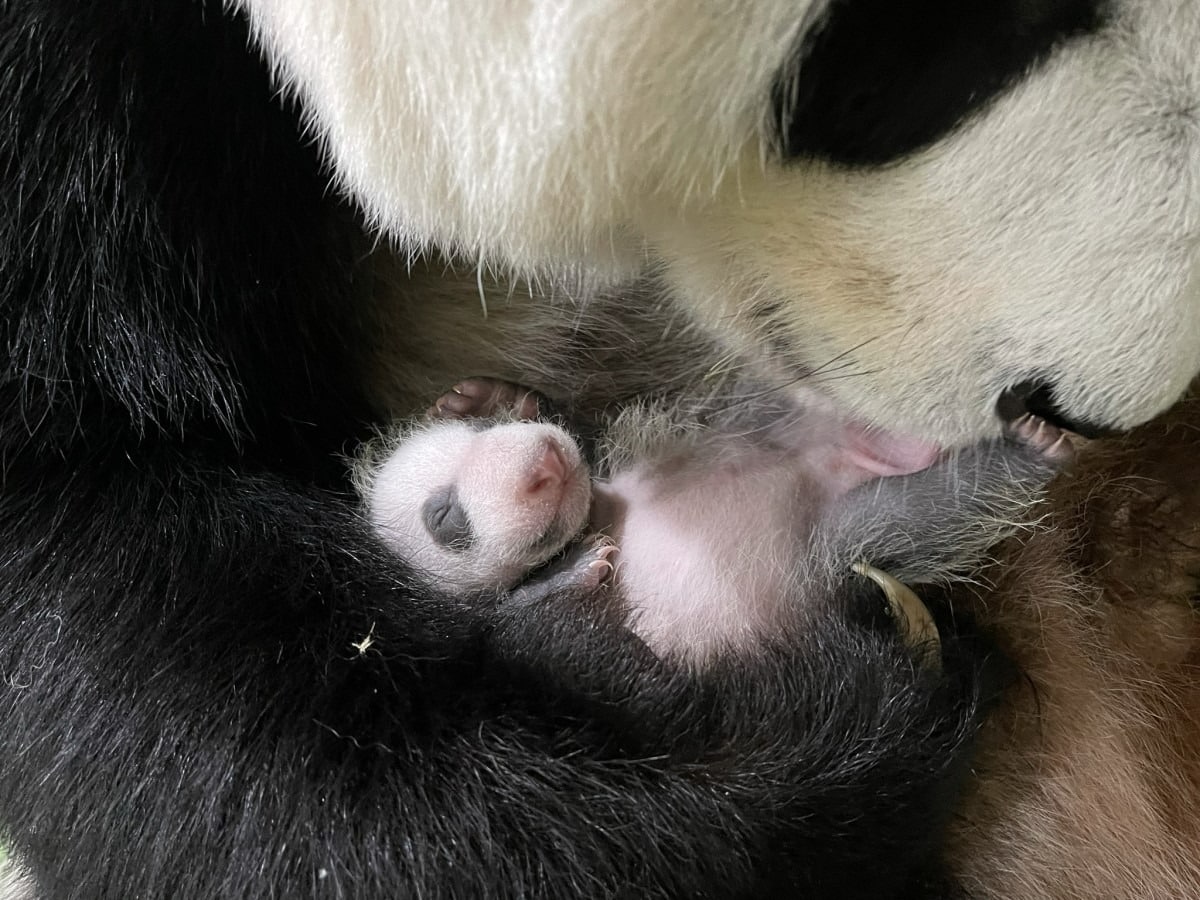Chinese Scientists visit renowned reproductive biologist David Kersey
Scientists from the China Conservation and Research Centre for the Giant Panda took a crucial step to repopulate the giant panda by recently visiting with a renowned reproductive biologist from Western University of Health Sciences in Pomona, California, U.S.A.
The scientists, Yingmin Zhou and Xiaoyu Huang, began their 20-day United States visit with three days of training with WesternU physiologist David Kersey, PhD, who recently was a key contributor in artificially inseminating (AI) Zoo Atlanta’s 15-year-old giant panda Lun Lun, who gave birth to twin panda cubs on July 15, 2013.
The scientists’ goal is to strengthen their technique on fecal hormone analysis to improve captive breeding, by maximizing the breeding potential of the captive giant panda population and reintroducing pandas into the wild.
The next step is to build the capacity to develop knowledge, bring it back to China, and apply it to species conservation, Kersey said.
“We have been able to grow the captive population, in part, by applying knowledge we generated from basic science research,” Kersey said. “They are looking to use the large captive population as a reintroduction reservoir.”
At their base in China, the scientists work in the endocrine laboratory, and are responsible for timing the AI and the breeding of perhaps dozens of female giant pandas each year.
Kersey said the reason feces are analyzed is because they’re easy to collect, and they store good hormone data.
“The next step is to conduct detailed studies of physiological changes of the species in the wild,” Kersey said. “Analysis of feces offers that opportunity.”
Zhou said her team came to the U.S. to make sure they are doing the analysis properly. The training they are receiving from Kersey and others will help them move beyond just collecting knowledge on captive populations.
“The goal is to protect the giant panda,” Zhou said. “It’s not enough to only populate pandas on reserves. We want to bring the giant pandas into the wild to make the species stronger.”
After learning from Kersey in the lab and through lectures, Huang and Zhou had planned to spend a week of additional training split between the Smithsonian Conservation Biology Institute and the Smithsonian National Zoological Park, but the federal government shutdown altered those plans.
Instead, arrangements were made for them to receive training at the San Diego Zoo and Safari Park and Brookfield Zoo in Chicago. Afterward, Kersey escorted them to an endocrine conference. The two then visited an endocrine assay company before heading back to China.
Pandas International, a non-profit leader in panda conservation, funded the trip.
About 1,600 giant pandas are left in the wild. More than 300 pandas live in zoos and breeding centers around the world, mostly in China. The panda is listed as endangered in the World Conservation Union’s (IUCN’s) Red List of Threatened Animals.










